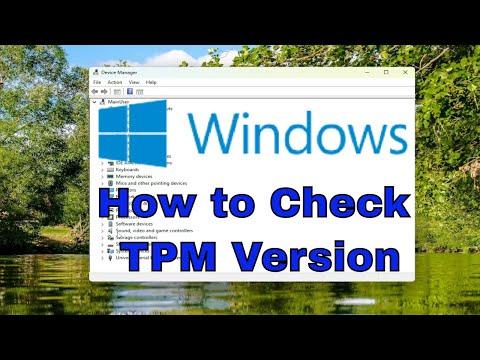I recently needed to check the TPM version on my Windows 11 machine, and I found it quite straightforward once I figured out the right steps. TPM, or Trusted Platform Module, is a hardware-based security feature that plays a crucial role in protecting your data. It’s essential for various security features in Windows 11, such as BitLocker encryption and secure boot.Here’s how I went about checking the TPM version on my system:First, I opened the Start menu by clicking on the Start button located at the bottom left corner of my screen. I then typed “tpm.msc” into the search bar. This command opens the TPM Management on Local Computer tool, which is where I needed to go to find out the TPM version.After typing “tpm.msc”, I pressed Enter, and the TPM Management tool opened in a new window. If TPM is enabled and functioning correctly on my computer, I would see a summary of the TPM status and some key information.In the TPM Management window, there is a section called “Status” that indicates whether TPM is ready for use. If my system did not have TPM enabled or if there were issues with it, I would see a message indicating that TPM is not available or not functioning properly. Fortunately, in my case, TPM was indeed available, and I could see the relevant details.To find the version number, I looked for the “TPM Manufacturer Information” section within the same window. Under this section, I saw a line labeled “Specification Version.” This line listed the version number of the TPM installed on my computer. For example, if it showed “2.0”, that means I have TPM version 2.0 installed. This is the version required for Windows 11, as Windows 11 mandates TPM 2.0 for enhanced security features.If, instead, I saw TPM version 1.2 or if the TPM section was blank or showing an error message, that would mean my computer might not meet the requirements for certain Windows 11 features or might need a hardware upgrade.To ensure that my TPM is properly enabled, I also checked the BIOS/UEFI settings of my computer. I restarted my computer and entered the BIOS/UEFI settings by pressing a specific key during startup (usually F2, F10, DEL, or ESC, depending on the manufacturer). Once in the BIOS/UEFI menu, I navigated to the security settings or advanced settings tab where TPM settings are usually found. Here, I made sure that TPM was enabled. If it wasn’t, I enabled it and saved the changes before exiting the BIOS/UEFI.In case I needed to update my TPM firmware or my system’s BIOS/UEFI, I would visit the manufacturer’s website for my motherboard or computer model. Manufacturers often provide updates to improve TPM functionality and overall system security. I downloaded any relevant updates and followed the provided instructions to apply them.I also learned that if my system did not have TPM at all, I might need to check whether my hardware supports TPM 2.0 and, if necessary, consider adding a TPM module if my motherboard allows for it. However, most modern systems already have TPM integrated, so this step is more relevant for older systems.To summarize, checking the TPM version in Windows 11 is a relatively simple process if you follow these steps. By using the TPM Management tool and ensuring that TPM is enabled in the BIOS/UEFI, I could confirm that my system met the necessary security requirements for Windows 11. If you’re facing issues or uncertainties about TPM, checking the manufacturer’s guidelines and system requirements is always a good practice.
How to Check TPM Version in Windows 11 [Guide]
